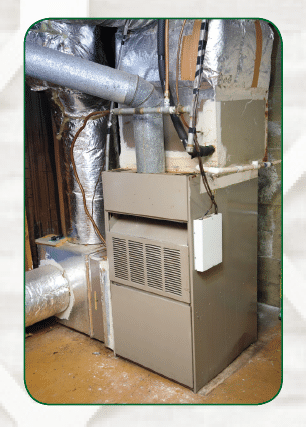The Quality of Indoor Air: How do you know if your home is safe?

Government agencies and medical sites have created many articles addressing exposure to too much mold, the certain types of mold that should be avoided, and when to call in a professional. With all of this data, there is surprisingly not one mention of a numerically safe level of mold a person or home can be in contact with. The guidelines for mold cleanup and safe exposure level are essentially unstated. The answers are often left to the opinion of the individual contractor. This does not mean that a professional does not follow protocols, or focus on the most stringent tests to verify effective mold removal. The indoor air quality industry has created a vast system of certifications in testing, and remediation. This is done in an effort to create standards and quality control benchmarks or safety protocols to measure successful remediation. Basically, a professional will tell you the types of mold measured and the amounts found should be lower inside the building, than a sample of the outside air.
Indoor Air Quality: The Fundamental Problems…
This book (see footnote below) has focused primarily on causation, - what allowed the mold to show up in the first place. This is so important in understanding the fundamental problems associated with EVERY mold problem. The mold never shows up where it cannot survive, it requires a host environment that feeds the mold all three key ingredients. We cannot escape the reality of mold showing up wherever we live, it likes the same habitats, the same temperatures, and moisture that we do. Unfortunately, when allowed to thrive in our habitats it alters the quality of the air we breathe, it can cause us irritation affecting our health and happiness.
It is easier to heat, cool, and clean the same air over and over again. This basic understanding of how air flows inside of a building helps us deduce the simplest way to “clean the air up.” Simply find the focal point of all the air movement, in this case, the central heating and air system located in a closet or attic, and clean it! All the air in the building runs through the air handler unit, is heated or cooled, and sent throughout the home in the duct work, and recycled back to the return box again.

While mold doesn’t grow on CLEAN metal, the evaporator (cold air conditioning) coil inside the air handler can be dirty, and probably is.

Condensation keeps the dirt wet and mold can grow on it. The spores this mold produces are released into the duct system and distributed throughout the house. One Orlando Florida homeowner told us that after discovering the mold in her air handler, the Dr. Energy Saver contractor got rid of it as part of a variety of improvements she had done. The results were miraculous to her. Her daughter, who had allergies, was literally taken off the allergy medicine!
We find it interesting and unfortunate that doctors don’t ask about what is going on in allergy sufferers’ homes. Doctor’s don’t suggest having ducts, crawl spaces, basements and attics inspected by a professional to make sure they aren’t just treating the symptoms rather than removing the cause. People live in homes thatare making them sick and are unaware of the cause. This is more common than most of us think.
A vital part to any set of solutions your contractor shows you should include methods to reduce indoor air contaminants. Filtering the air we circulate in our home makes sense.
Effective filtration should “catch” the microscopic particulates - like mold spores. Placing those filters/mechanisms in areas more likely to have higher spore counts makes the best sense. Of course you know by now it is not enough to react to airborne mold spores, youmust prevent mold from growing in the first place!
The SaniDry air systems previously mentioned not only dehumidify the air; they also have particulate filtration. They will remove particles out of the air down to 2 microns in size – and all mold spores are bigger than that.

*A note here about stand alone air purifiers: There are many devices available today for purchase which claim to “kill” airborne contaminates. Assuming they do what they are claiming to do, purify the air, it does beg a basic question. How much air are they cleaning? Likely the few feet closest to the units
themselves and not much more. So you need several for each room of your house? Make sure to check the rated area of effectiveness for each unit. It would be a shame to have an effective cleaning device that only worked in a 5’ sphere of influence, right?
Chapter 4 excerpt from Mold Prevention Science authored by Clint Cooper and Larry Janesky. Can be purchased by clicking here.
*Redeemers Group gives our mold customers a copy of this book prior to their inspection appointment. If you have a mold problem in your home or commercial property, give us a call. Read more about mold and our services by clicking here.

our service area
We serve the following areas
- Adamsville
- Alamo
- Bells
- Bethel Springs
- Bogota
- Counce
- Crockett Mills
- Crump
- Denmark
- Dyersburg
- Finley
- Friendship
- Fruitvale
- Gadsden
- Gates
- Guys
- Halls
- Hornbeak
- Lenox
- Maury City
- Medon
- Mercer
- Michie
- Morris Chapel
- Newbern
- Obion
- Ridgely
- Rives
- Samburg
- Savannah
- Selmer
- Shiloh
- Silerton
- South Fulton
- Stantonville
- Tigrett
- Tiptonville
- Toone
- Trimble
- Troy
- Union City
- Woodland Mills
- Wynnburg
- Bragg City
- Campbell
- Caruthersville
- Clarkton
- Hayti
- Wardell
- Holcomb
